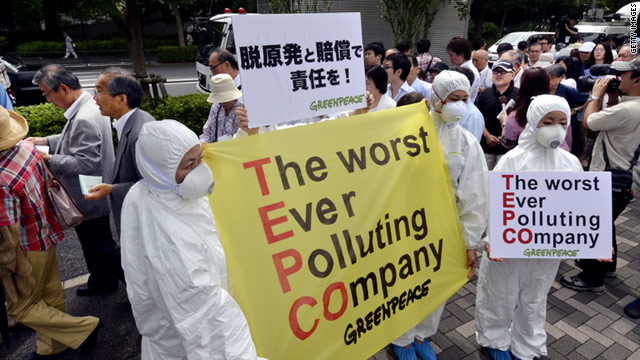 Washington (CNN) -- U.S. experts are calling for stepped-up safety measures at nuclear power plants following the March disaster in Japan, including new systems to keep reactors cool in case of a blackout.
Washington (CNN) -- U.S. experts are calling for stepped-up safety measures at nuclear power plants following the March disaster in Japan, including new systems to keep reactors cool in case of a blackout.
A Nuclear Regulatory Commission task force commissioned after the triple meltdown at Japan's Fukushima Daiichi plant says the risk of a similar accident in the United States is low, but any would be "inherently unacceptable." The commission called for replacing a "patchwork" of existing regulations with a "logical, systematic and coherent" set of rules.
"We looked at ensuring protection, enhancing accident mitigation, strengthening emergency preparedness and improving the efficiency of NRC programs," the head of the review team, Charles Miller, said in a statement announcing the recommendations.
Among the 12 proposals delivered Tuesday are calls for plant operators to rethink each facility's disaster plans, including how big an earthquake, tornado, tsunami or flood the plant is designed to withstand. They also recommend that plants be able to operate on battery power for eight hours -- twice the current standard -- and for emergency plans that would enable cooling systems to operate for 72 hours during a blackout.
The task force also recommended stronger oversight of plant safety performance, with more focus on "defense-in-depth" regulations.
It was the loss of coolant systems following Japan's March 11 earthquake and tsunami that caused the meltdowns at the three operating reactors at Fukushima Daiichi, about 250 miles north of Tokyo. The resulting release of radioactivity was the worst nuclear accident since the 1986 Chernobyl disaster, forcing Japanese authorities to evacuate more than 100,000 people from homes up to 40 km (25 miles) away.
Japanese Prime Minister Naoto Kan outlined a plan Wednesday to reduce the country's reliance on nuclear energy.
"When we think of the great risk this nuclear energy imposes, our traditional position of ensuring safety will not be enough," Kan said. "We would like to seek to build a society which does not depend on nuclear energy.
Engineers are still working to restore normal cooling at the plant and struggling to store and decontaminate an estimated 100,000 tons of water that it has pumped through the crippled reactors to cool them down. The Tokyo Electric Power Company, which owns the plant, projects the crisis will be fully brought to heel between October to January.
The recommendations in the NRC task force include requiring vent systems that could limit the buildup of steam and gas in boiling-water reactors like the ones at Fukushima Daiichi. There are 23 operating U.S. reactors with the same basic containment design, the General Electric Mark 1.
Hydrogen explosions -- a symptom of damage to a reactor's fuel core -- blew apart the buildings surrounding the No. 1 and No. 3 reactors at Fukushima Daiichi in the days following the quake, while another hydrogen blast is believed to have damaged the inside of the No. 2 reactor.
The Nuclear Energy Institute, the trade association for the U.S. nuclear industry, said it will review the NRC report and respond to specific points on Wednesday.
"We will continue to work with the Nuclear Regulatory Commission to understand any potential gaps in safety and fill those gaps," the group said in a written statement. But it added, "A 90-day review does not permit a complete picture of a still-emerging situation."
"We strongly recommend that the NRC seek additional information from Japan that would help establish the basis for actions," the NEI said. "Consistent with the NRC's principles of good regulation, we look forward to participating in a broad stakeholder dialogue on the task force report."



